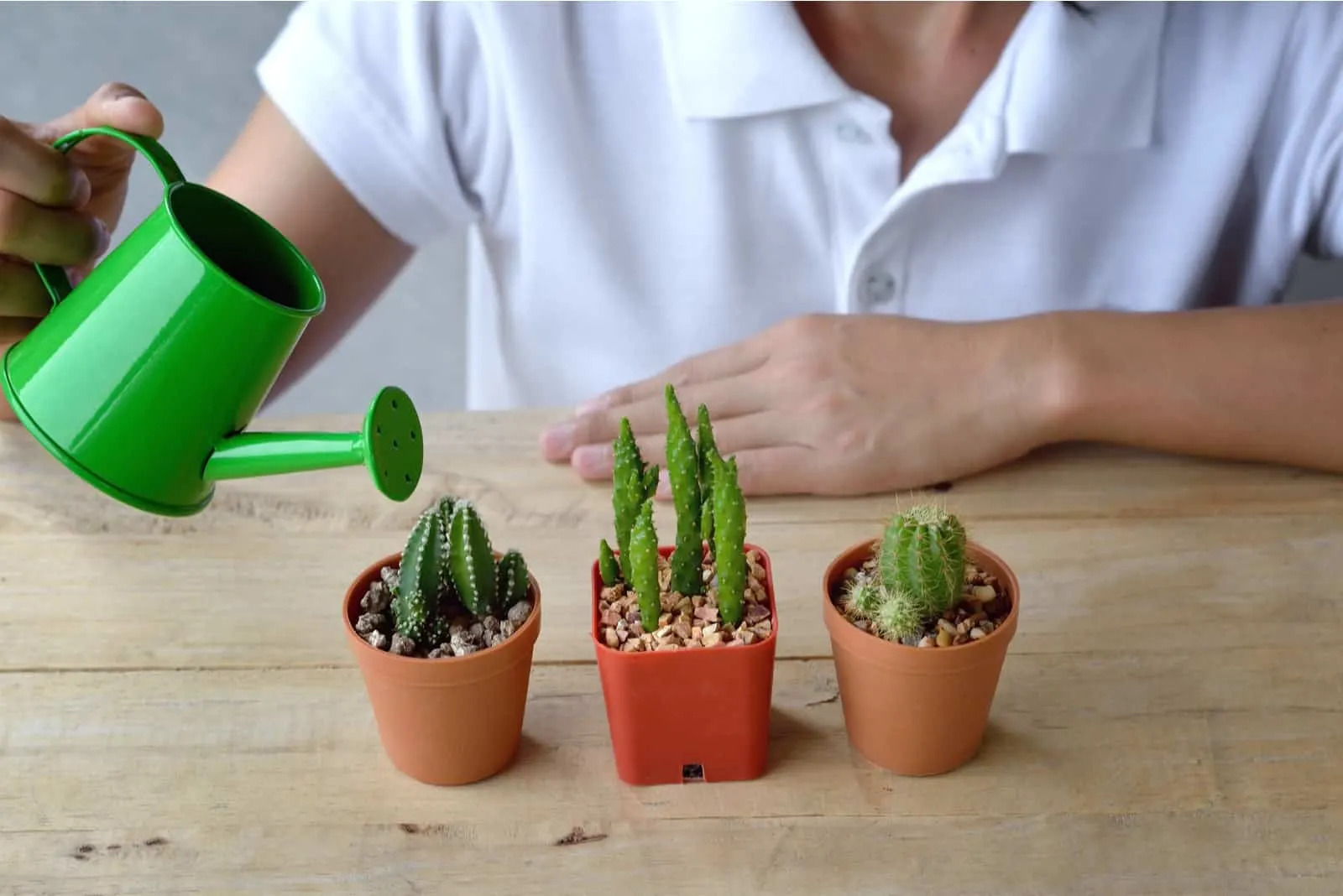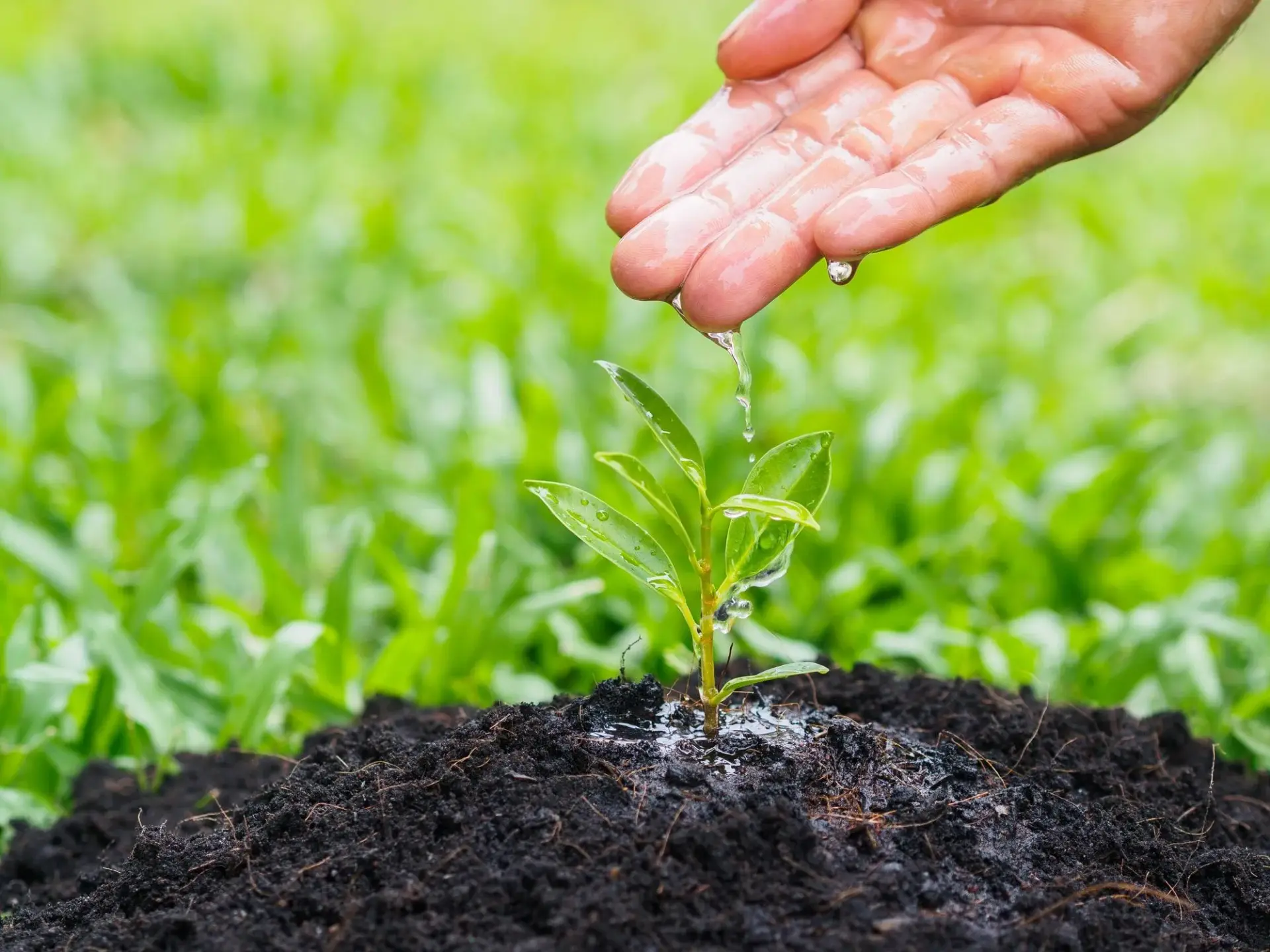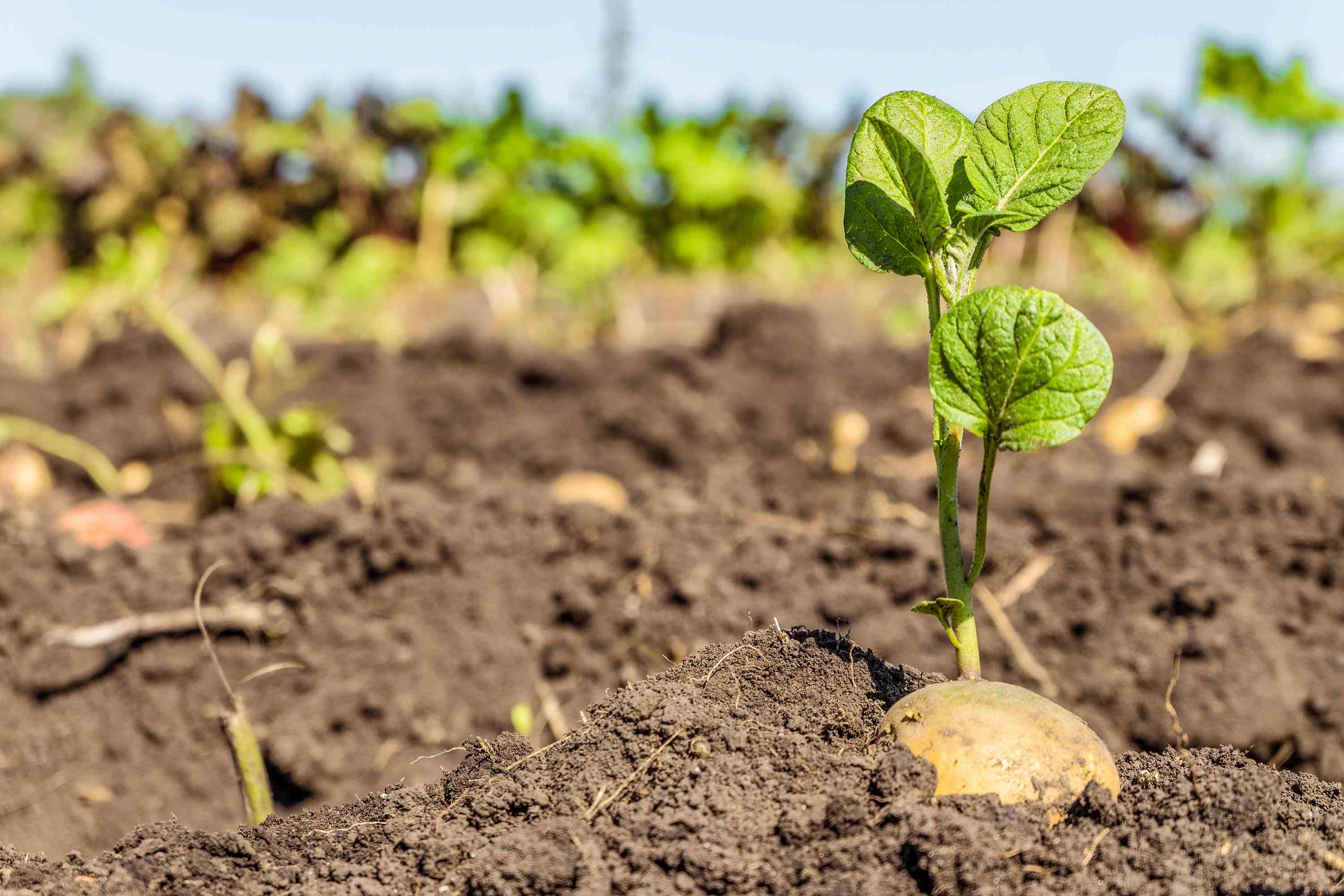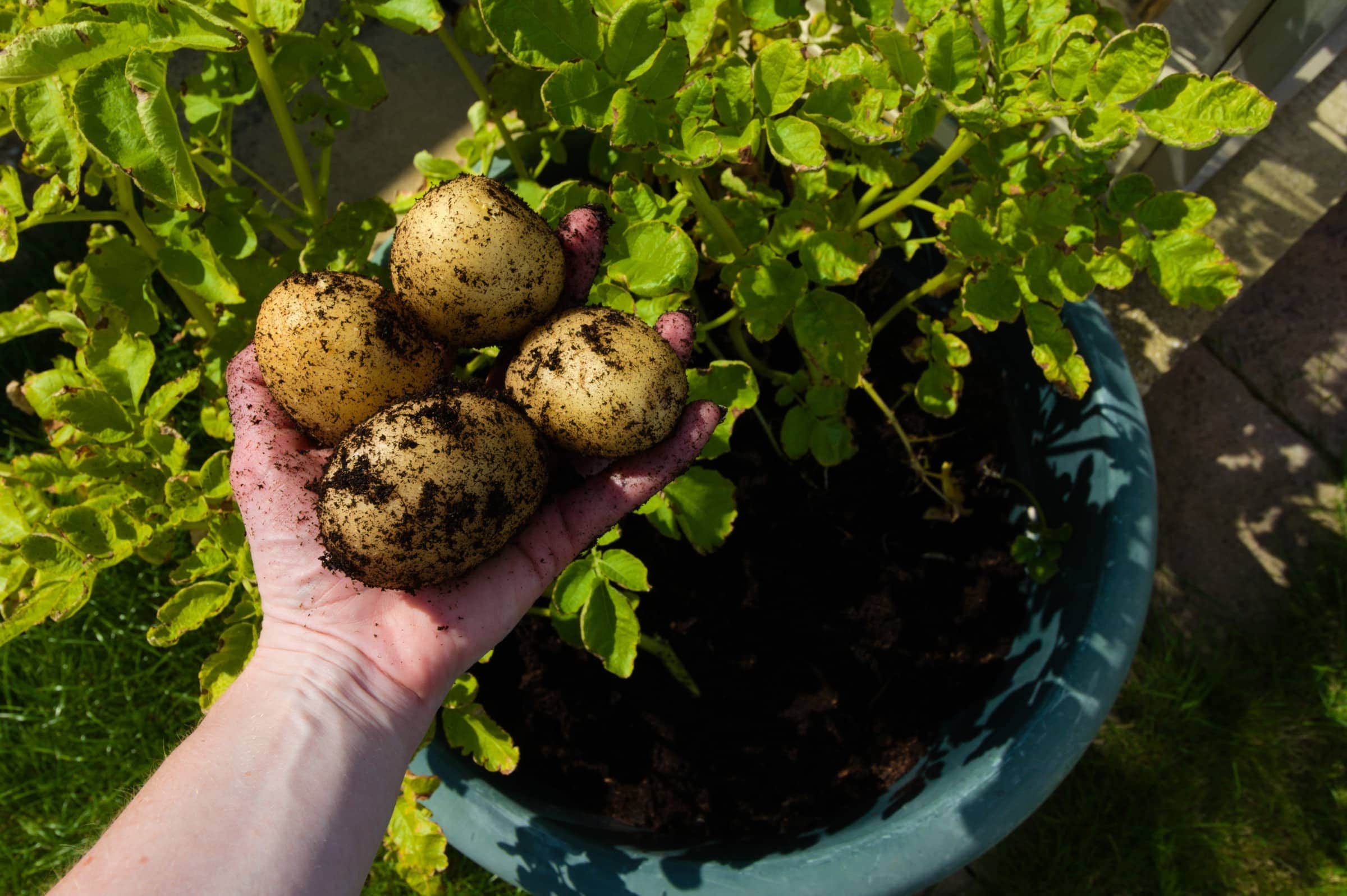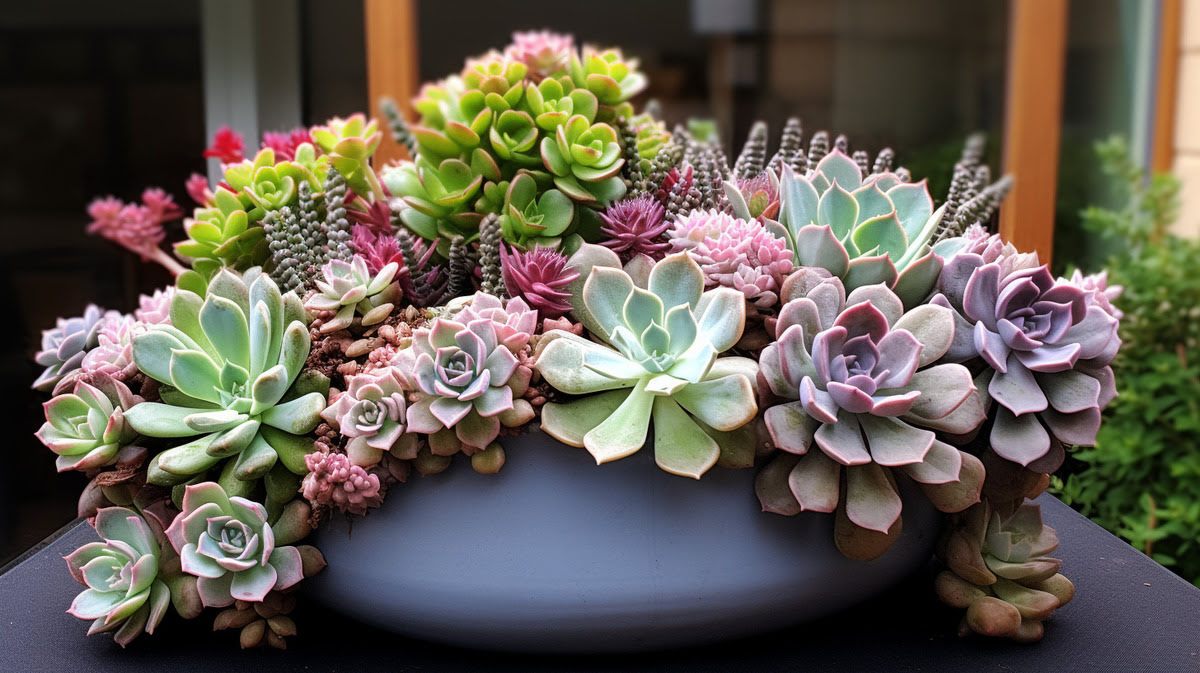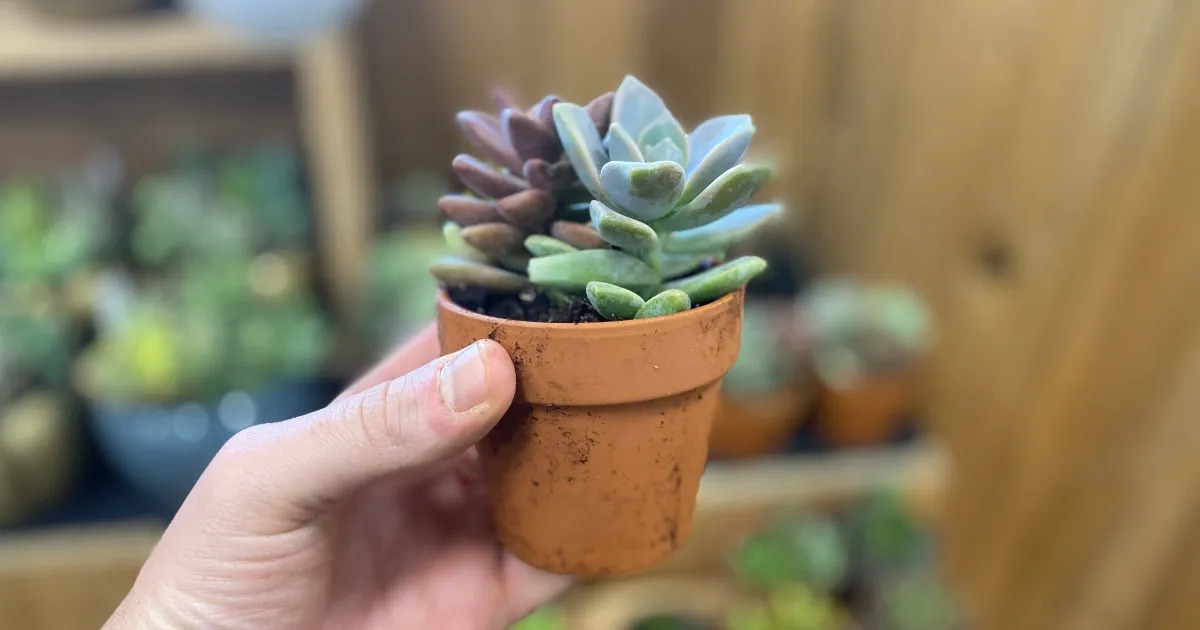Home>Types of Gardening>Ornamental Gardening>How Long To Wait To Water Succulents After Repotting
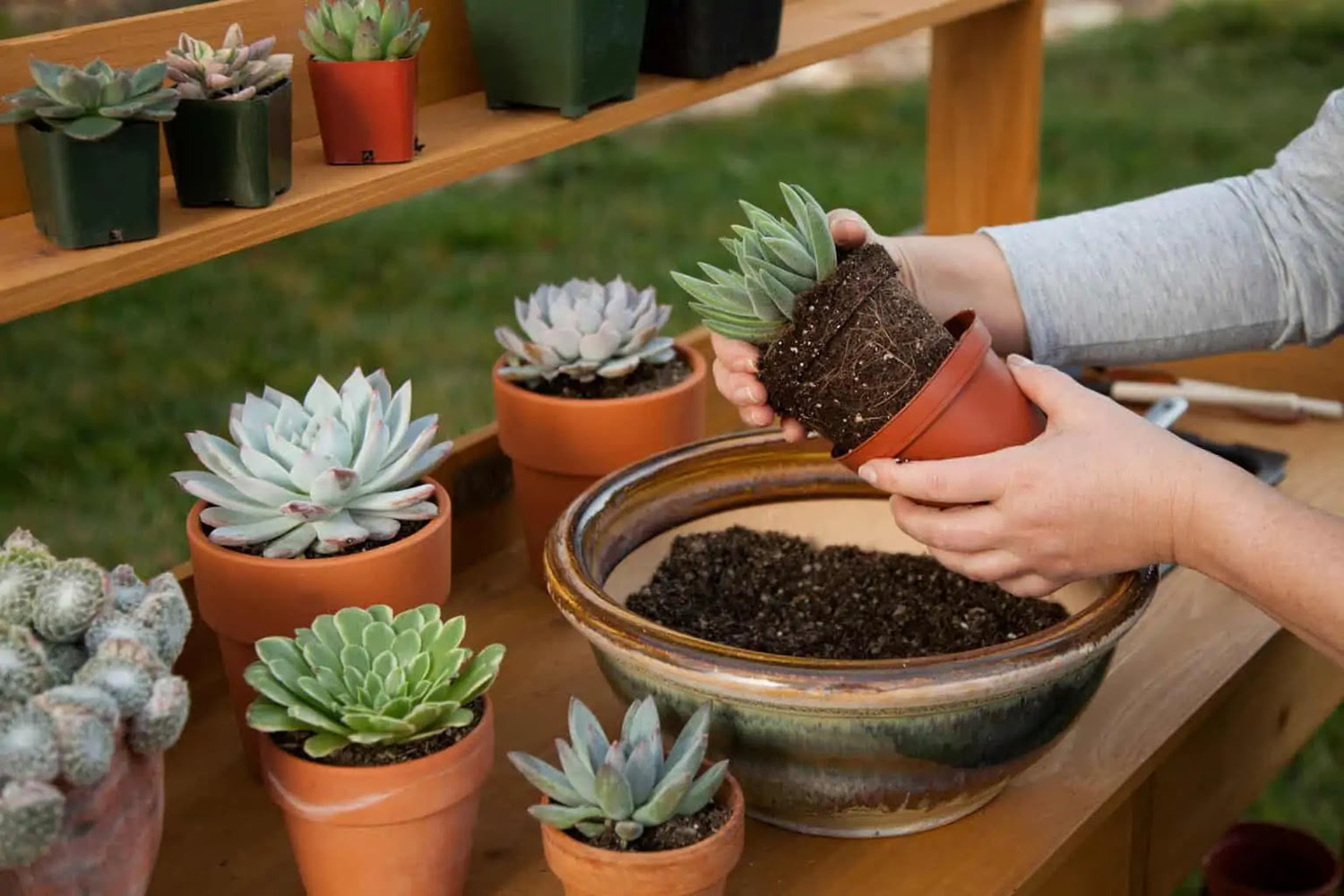

Ornamental Gardening
How Long To Wait To Water Succulents After Repotting
Modified: January 22, 2024
Discover the best practice for watering succulents after repotting. Get expert tips from our ornamental gardening guide to ensure your succulents thrive.
(Many of the links in this article redirect to a specific reviewed product. Your purchase of these products through affiliate links helps to generate commission for Chicagolandgardening.com, at no extra cost. Learn more)
Table of Contents
Introduction
Welcome to the world of ornamental gardening, where the beauty of nature is brought to life through a carefully curated collection of plants and flowers. Within this vast realm, succulents hold a special place, captivating garden enthusiasts with their unique shapes, vibrant hues, and ability to thrive in challenging conditions. Whether you are a seasoned gardener or just starting out, succulents are a wonderful addition to any collection.
When it comes to successfully growing and caring for succulents, one crucial aspect to consider is repotting. Repotting allows you to refresh the soil, provide new nutrients, and give your succulent more space to grow. However, repotting is not a task to be taken lightly, as it can potentially stress out your succulent and disrupt its delicate balance.
One of the common questions that arise after repotting succulents is: How long do I have to wait before watering them? This is an important consideration, as watering too soon can lead to overwatering and root rot, while waiting too long can cause the succulent to become dehydrated and suffer from underwatering.
In this article, we will explore the factors that influence the waiting time after repotting succulents and provide you with practical tips on how to determine when to water your newly repotted succulents. So, grab your gardening gloves and let’s delve into the world of succulent repotting!
Why Repot Succulents?
Repotting succulents is a vital part of their growth and overall well-being. There are several reasons why repotting is necessary, and understanding these benefits can help you ensure the health and longevity of your succulents.
Firstly, repotting allows you to provide fresh, nutrient-rich soil for your succulents. Over time, the soil in the pot can become compacted and depleted of nutrients, hindering the plant’s growth. By repotting, you can replenish the soil with a well-draining mix that is specifically designed for succulents. This helps in promoting proper root development and ensures that your succulent receives the essential nutrients it needs to thrive.
Secondly, repotting provides your succulents with more room to grow. As succulents mature, they produce new offsets or “pups,” which eventually outgrow their original pot. Repotting gives these young plants adequate space to spread their roots and establish themselves in their new environment.
Another important reason to repot succulents is to address any issues related to overcrowding and root bound conditions. When succulents are left in the same pot for too long, their roots can become tangled and overcrowded, leading to poor drainage and potential root rot. Repotting allows you to untangle these roots, trim away any damaged parts, and give your succulents a fresh start in a larger pot.
Furthermore, repotting provides an opportunity to inspect your succulents for any signs of pests, diseases, or root damage. By carefully examining the roots and plant, you can identify and address any issues early on, preventing further damage.
Overall, repotting is essential for the long-term health and growth of your succulents. It ensures that they have access to the necessary nutrients, space, and drainage, while also allowing you to monitor their condition and address any potential problems. So, don’t hesitate to give your succulents the care they deserve by repotting them when needed.
The Importance of Waiting
After repotting your succulents, it is crucial to exercise patience and allow them to adjust before watering them. Waiting is important for several reasons.
Firstly, during the repotting process, succulents may experience stress and their roots may become disturbed or damaged. Watering immediately after repotting can further stress the plant and lead to potential problems such as root rot. By waiting, you give the succulent time to recover and allow their roots to heal and establish in the new soil.
Secondly, succulents have unique watering needs compared to other houseplants. They store water in their leaves and stems to withstand dry periods. Overwatering succulents can cause their roots to rot and lead to root rot, a condition that can be fatal to the plant. By waiting after repotting, you prevent the risk of overwatering and ensure the succulent has a chance to utilize its stored water.
Furthermore, waiting after repotting allows the soil to settle and stabilize. Repotting can disturb the soil structure, leading to air pockets or uneven moisture distribution. By waiting, you give the soil time to compact naturally, ensuring proper water distribution and preventing the risk of waterlogged or dry patches within the pot.
Lastly, waiting provides an opportunity to observe the succulent and assess its condition. By observing the plant for signs of stress, such as wilting or discoloration, you can determine if it needs water. Waiting allows you to avoid watering on a fixed schedule and instead provides a more personalized approach based on the specific needs of each succulent.
In summary, waiting is essential after repotting succulents to allow them time to recover, prevent overwatering, promote soil stability, and assess the plant’s needs. Patience and observation are key to ensuring the long-term health and success of your newly repotted succulents.
Factors Affecting the Waiting Time
The waiting time after repotting succulents can vary depending on various factors. Understanding these factors will help you determine how long to wait before watering your newly repotted succulents.
1. Succulent Type: Different types of succulents have different water storage capacities, growth rates, and moisture requirements. Some succulents, such as Echeveria and Sempervivum, have larger leaves and therefore store more water, while others, like Crassula and Haworthia, have smaller leaves and store less water. The type of succulent you are working with will greatly affect the waiting time after repotting.
2. Size of Succulent: The size of the succulent also plays a role in determining the waiting time. Smaller succulents generally require less water and may have a faster recovery time after repotting, while larger succulents may need more time to establish their roots and recover from the transplant shock.
3. Environmental Conditions: The temperature, humidity, and sunlight exposure in your location can impact the succulent’s water needs and recovery time. Hot and dry climates may require more frequent watering, while cooler and more humid environments may allow for longer intervals between watering after repotting.
4. Season: The time of year can affect the waiting time after repotting. During the active growing season, succulents may require more frequent watering, whereas in dormant periods, they generally need less water. Adjusting the waiting time based on the season can help ensure that you are providing the right amount of water to your succulents.
5. Pot and Soil: The type of pot and the soil composition can influence water retention and drainage. Succulents thrive in well-draining soil and pots with drainage holes. If you have chosen the right pot and soil mix, it can help regulate the moisture levels and influence the waiting time after repotting.
By considering these factors and observing the specific needs of your succulents, you can determine an appropriate waiting time before watering after repotting. It is essential to approach watering with flexibility and adapt based on the unique requirements of each succulent.
How to Determine When to Water After Repotting
Determining when to water your succulents after repotting is a crucial step to avoid the pitfalls of overwatering or underwatering. Here are some effective methods to help you determine the right time to water your newly repotted succulents:
1. Touch Test: The most straightforward method is to feel the soil. Stick your finger about an inch into the soil and check for moisture. If the soil feels dry to the touch, it’s an indicator that your succulent needs water. However, if the soil still feels damp or moist, it’s best to wait longer before watering.
2. Weight of the Pot: Another way to determine the watering needs is by lifting the pot. After repotting, the soil can be heavier due to the added moisture. As the plant utilizes the stored water, the pot will become lighter. Lift the pot and familiarize yourself with its weight when it is thoroughly watered. Then, periodically check the weight by lifting the pot to gauge its watering needs. If the pot feels considerably lighter, it’s a sign that your succulent may need watering.
3. Visual Indicators: Observe your succulent for visual cues that indicate the need for water. Look for signs of dehydration, such as wilted, shriveled leaves or a visibly dried-out soil surface. Alternatively, if the leaves start to plump up or appear more turgid and the soil surface is dry, it may be time to water your succulent.
4. Time-Based Approach: If you prefer a more structured approach, you can establish a watering schedule based on the specific needs of your succulent. Research the watering requirements of the particular succulent species you are growing, taking into account factors like environmental conditions and the succulent’s growth stage. However, it is essential to adjust the schedule based on the moisture needs of the soil and the plant itself. Stick to the schedule only if the soil has dried out enough to warrant watering.
Remember that overwatering can be more detrimental to succulents than underwatering. When in doubt, it is better to err on the side of underwatering and wait a little longer before giving your succulents a drink. Succulents are adapted to survive in arid conditions and can withstand longer periods without water.
By combining these methods and observing the specific needs of your succulents, you can determine the appropriate timing for watering after repotting. This tailored approach will help promote the overall health and resilience of your succulents.
Signs of Underwatering
Underwatering is a common concern when caring for succulents, especially after repotting. It is important to be able to recognize the signs of underwatering to ensure the health and vitality of your plants. Here are some common indicators of underwatering:
1. Wrinkled or Shriveled Leaves: Succulents store water in their leaves, so when they are not receiving enough moisture, the leaves will start to lose their plumpness and appear wrinkled or shriveled. This is a clear sign that your succulent is in need of water.
2. Dull or Discolored Leaves: A lack of water can cause the leaves of your succulent to become dull in color. They may appear faded or have a slightly washed-out appearance. The lack of water affects the plant’s ability to maintain its vibrant hues, leading to a less healthy and vibrant appearance.
3. Leaf Drop: In severe cases of underwatering, the succulent may begin to shed its leaves. This is the plant’s way of conserving energy and water. If you notice leaves falling off easily or finding dried leaves around the base of the plant, it is a sign that your succulent is not getting enough water.
4. Slow Growth or Stagnation: Succulents that are underwatered often exhibit slow or stunted growth. The lack of water hampers the plant’s ability to carry out essential metabolic processes, resulting in a lack of new growth and overall stagnation. If you notice that your succulent isn’t growing as it should, it may be an indication of underwatering.
5. Dry Soil: One of the most obvious signs of underwatering is dry soil. When you check the soil with your finger, it feels excessively dry to the touch. The soil may not hold any moisture and may appear crumbly. Dry soil is a clear indication that your succulent needs watering.
6. Dehydration Symptoms in Succulent Leaves: Some succulents, like certain varieties of Echeveria or Crassula, display specific dehydration symptoms. These may include the leaves curling or folding inward or the tips of the leaves turning brown and crispy. These symptoms indicate that the succulent is not receiving adequate water.
It is important to address underwatering promptly to prevent further damage to your succulents. When you notice these signs, increase your watering frequency, ensuring that the soil is thoroughly moistened without becoming waterlogged. Remember to adjust the watering schedule and amount based on the specific needs of each succulent and the environmental conditions they are in.
Signs of Overwatering
Overwatering is a common mistake made when caring for succulents, and it can have detrimental effects on their health. It is crucial to recognize the signs of overwatering to prevent root rot and other issues. Here are some telltale signs of overwatering to watch out for:
1. Yellowing or Translucent Leaves: Overwatered succulents often develop yellow or translucent leaves. This is caused by excessive moisture, which leads to cell damage and reduced chlorophyll production. The leaves may appear soft and mushy when touched and may even become dislodged easily.
2. Leaf Drop: If your succulent is dropping healthy-looking leaves despite adequate light and care, overwatering may be the culprit. Overwatered plants struggle to absorb oxygen due to waterlogged roots, leading to root rot and leaf drop as the plant attempts to shed damaged or suffocated parts.
3. Soft or Mushy Stems: Overwatering can cause the stems of your succulents to become soft or mushy to the touch. Healthy succulent stems should be firm and plump. Soft or squishy stems can indicate waterlogged tissues, which can lead to rot and eventually cause the entire plant to decline.
4. Foul Odor: If you notice a foul smell coming from the soil or the base of your succulent, it could be a sign of overwatering and root rot. The excess moisture creates a hospitable environment for bacteria and fungi to grow, resulting in the unpleasant odor.
5. Slow Growth or Lack of New Growth: Overwatering can inhibit the growth of succulents. They may show a lack of new growth or very slow growth compared to healthy, well-watered plants. The excessive water disrupts the natural balance of nutrients and oxygen, limiting the plant’s ability to photosynthesize and grow.
6. Mold or Fungus Growth: Excessive moisture and poor drainage create an ideal environment for mold and fungus to flourish. If you notice fuzzy, mold-like growth on the soil surface or the base of your succulent, it is a clear sign of overwatering. Address this issue promptly to prevent further damage.
When you suspect overwatering, it is crucial to correct the watering habits immediately. Allow the soil to dry out completely before watering again and ensure that the pot has adequate drainage. If the overwatering has caused severe damage, you may need to repot the succulent in fresh, well-draining soil.
By being vigilant and adjusting your watering practices accordingly, you can prevent the negative effects of overwatering and maintain the health and vitality of your succulents.
Tips for Watering Succulents After Repotting
Proper watering is crucial for the successful growth and care of succulents, especially after repotting. Here are some helpful tips to ensure you water your newly repotted succulents effectively:
1. Wait for the Right Time: After repotting, it is important to wait for the appropriate time before watering your succulents. Allow the plant to adjust and the roots to heal before introducing moisture. As mentioned earlier, use methods like the touch test or pot weight to determine when the soil is dry enough to require watering.
2. Water Thoroughly: When it is time to water, make sure to thoroughly saturate the soil. Water the succulent until water drains out from the bottom of the pot, ensuring complete soil hydration. This will encourage the roots to establish and spread throughout the newly repotted container.
3. Practice Controlled Watering: Succulents prefer a “soak and dry” approach to watering. This means watering the succulent deeply, allowing excess water to drain away, and then allowing the soil to completely dry out before watering again. Avoid frequent light watering, as it can lead to shallow root growth and susceptibility to overwatering.
4. Adjust Watering Frequency: The watering frequency will vary depending on the specific succulent species, environmental conditions, and the size of the pot. As a general rule, established succulents in well-draining soil may require watering every 1-2 weeks, while smaller pots, certain succulent types, or high temperatures may warrant more frequent watering. Monitor the moisture levels and adjust the watering schedule accordingly.
5. Time Watering Wisely: It is best to water succulents in the morning or early afternoon. This allows the plant to absorb the moisture during the day and provides enough time for excess water to evaporate before cooler evening temperatures. Avoid watering at night, as the longer damp period may increase the risk of fungal diseases.
6. Use the Right Watering Technique: When watering succulents, avoid splashing water directly on the leaves to prevent rot and fungal issues. Instead, direct the water towards the base of the plant, allowing it to soak into the soil and reach the roots. Utilize a watering can with a narrow spout or a controlled stream to ensure accurate water placement.
7. Consider the Seasonal Changes: Adjust your watering routine based on seasonal changes. Succulents have different water requirements during their active growth period compared to their dormant phase. During active growth, they may need more frequent watering, while in dormancy, they require less water. Observe the plant’s response and adjust watering accordingly.
Remember that these tips serve as general guidelines, and it is important to observe and respond to the specific needs of your succulents. Regularly assess the soil moisture, observe the plant for signs of either underwatering or overwatering, and adjust your watering practices accordingly. Consistency and proper watering techniques will help your succulents thrive after repotting and maintain their health and beauty.
Conclusion
Caring for succulents after repotting requires patience, observation, and a thorough understanding of their unique watering needs. Waiting for the right time before watering allows the succulents to recover from the repotting process and establish their roots in the new soil. Factors such as succulent type, size, environmental conditions, and the pot and soil composition all play a role in determining the waiting time after repotting.
By paying attention to the signs of underwatering, such as wrinkled leaves and dry soil, or the signs of overwatering, such as yellowing leaves and mushy stems, you can adjust your watering practices accordingly. A balanced approach to watering, using methods like the touch test, pot weight, and visual indicators, will help ensure that your succulents receive the right amount of water at the right time.
Remember to water thoroughly, practicing controlled watering to promote deep root growth and avoid shallow root systems. Consider the seasonal changes and adapt your watering routine accordingly. By following these tips and guidelines, you can foster the health and vibrancy of your succulents after repotting.
So, embrace the world of ornamental gardening with succulents and enjoy the beauty and resilience these plants bring. With proper care, your succulents will flourish and become stunning additions to your garden or indoor space. Happy gardening!

